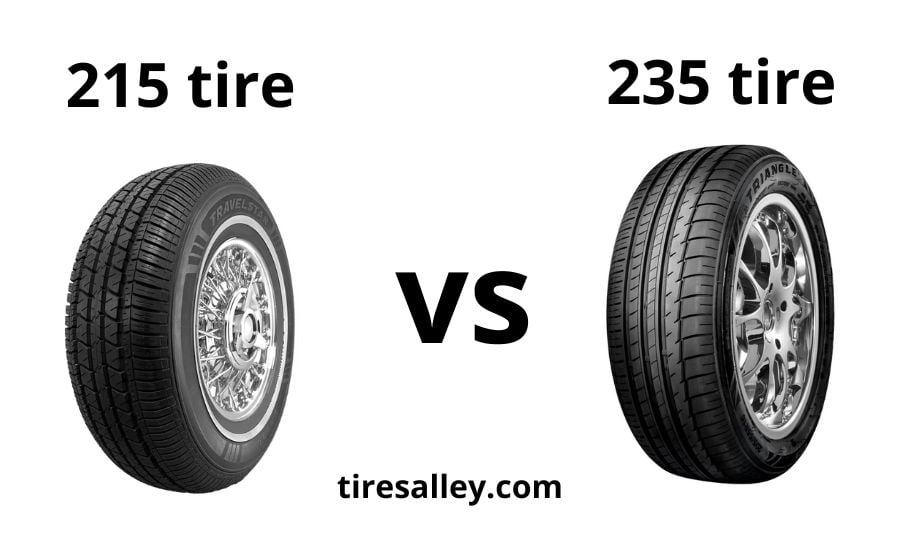The automotive industry depends on tire technology as tires are a vital part of any motor carrier. Tires are responsible for better traction, and controllability during driving.
At first glance, many types of tires may appear very similar.
In this article, I will share my expert skills and explain to you the 215 and 235 tires distinctions from each other and the features that make them effective for a vehicle.
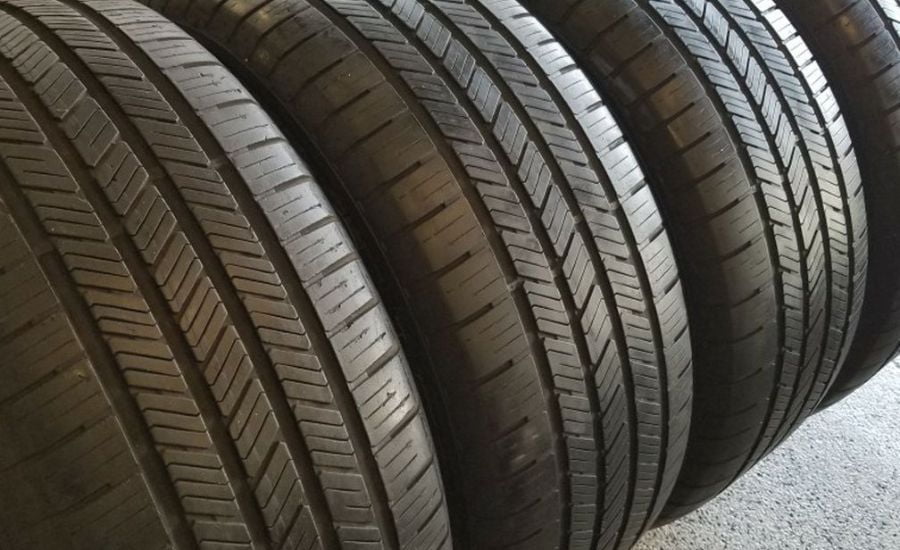
Contents
215 vs 235 tires: analysis
Many of my clients, when arrive at a crossroads and don’t know what to choose, go through tire sizes. I always remind them, that the 215 tires are 215 mm and 235 tires measure 235 mm. This 20-mm deviation can impact various aspects.
A 215 will benefit from being narrower than a 235. As well as improving your car’s handling, you will also save on fuel.
The narrower the tires, the lower rolling resistance they have, thus lower fuel consumption than their wider counterparts over the same distance.
Wider tires, such as the 235 tire, offer a strengthened grip, particularly in severe weather. And all because of the larger contact patch with the road, which boosts handling and traction. If you have consistently bad weather, 235 tires are the best.
215 and 235 tires are to be used in different vehicles. The size of your wheels and the ground clearance may impact which tire size is suitable. Refer to the owner’s manual to verify the best tire size for the vehicle.
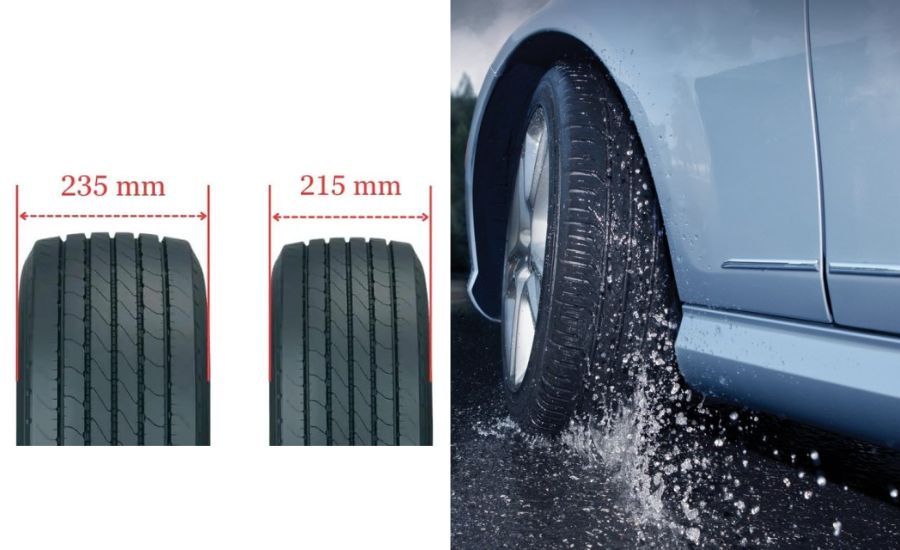
Tire size explanation
Working out how to do tire sizes is easy. The necessary information can be found on the outside wall of the tire. The tire size is printed above the rim where the tire manufacturer is indicated at the bottom.
The meaning of 215
The number 215 points to the tread width in millimeters.
Additional figures may also be present on a tire, such as 215/65R16, which means that the tire has an aspect ratio of 65% and is suitable for a 16-inch rim.
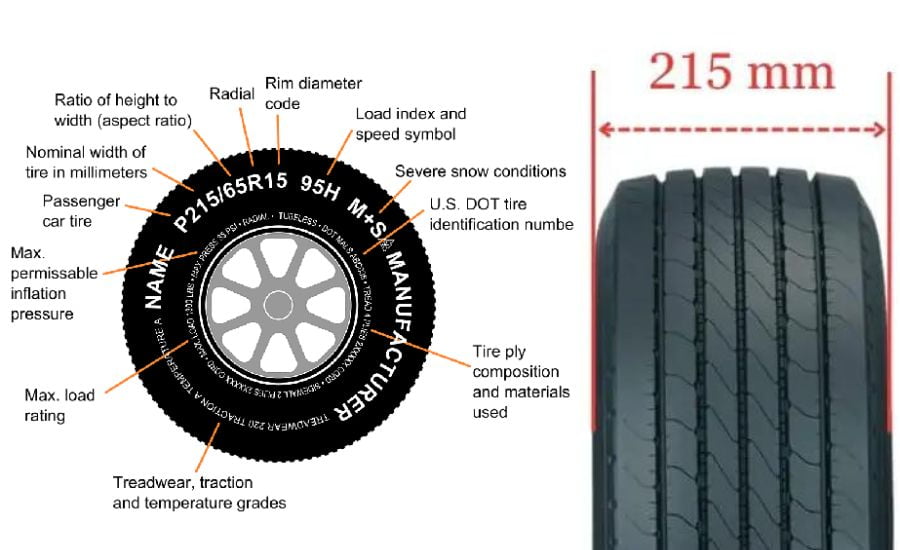
The meaning of 235
A tire marked with the figure 235 tells that the tread width is 235 millimeters wide. These tires are broader and bigger, making them suitable for small trucks and overweight cars.
The tire may also have other signs, such as the letters P or LT before the number 235. P235 shows that the tire is mainly for motor passenger cars, whereas LT235 is for small trucks.
235 75 R15 – means that the side height is 75% of the tread width at a wheel diameter of 15 inches, with an aspect ratio of 0.75. A higher number means a taller tire and a lower number means a shorter tire.
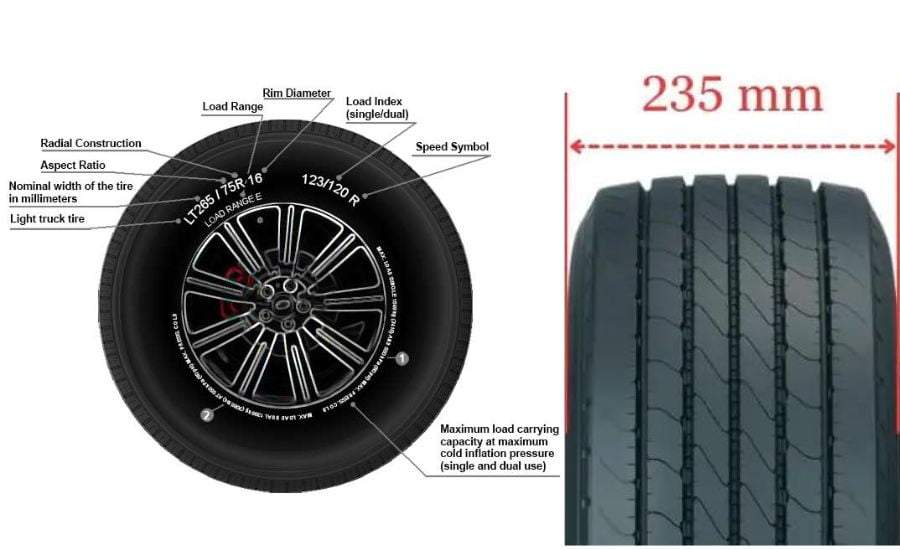
Comparing 215 vs 235 tires
Car tires affect the safeness of vehicles and hence when replacing old tires with new ones it is important to have the correct tire sizes available, i.e. the tire sizes are identical to those that came with the car originally.
As 215 and 235 tires are often confused, let’s take a closer look at their few distinctions.
235 vs 215 tires: handling capabilities
Tire handling capabilities are a function of two main factors: the tire’s width and the tire’s sidewall height.
The 215 and 235 tires have various side panel heights. Therefore, tire width is the most important factor.
Wider tires offer better handling in corners, making 235s a better choice than 215s.
Grip
Wider tires are preferred as they guarantee greater surface contact, generating dry grip and performance. This larger road contact area significantly boosts handling, even at high speeds.
For improved grip and traction, it is recommended to select 235 tires. The choice of tires will impact how quickly the transport can change the tire’s direction.
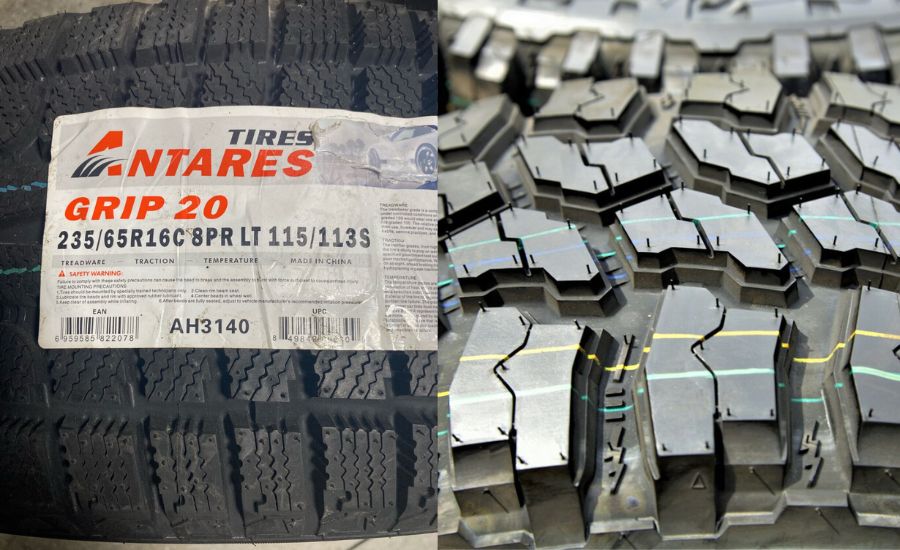
215 vs 235: wider tire
The primary distinction between 215 and 235 tires is their width, with 235 tires being 235mm wide and 215 tires being 215mm wide. The first number points at the tread width in millimeters. The traction of the tires can be affected by a significant change in tread width, even though the tire’s overall diameter should remain consistent.
But it’s worth remembering that the broader the tire, the rougher it rides, and this applies to both tire width and tire diameter.
The 235 model gives greater ground clearance, controllability, and traction due to its slightly wider build. However, this comes at the cost of reduced handling and increased wear.
Despite these dissimilarities, both tire ranges have their predominant features.
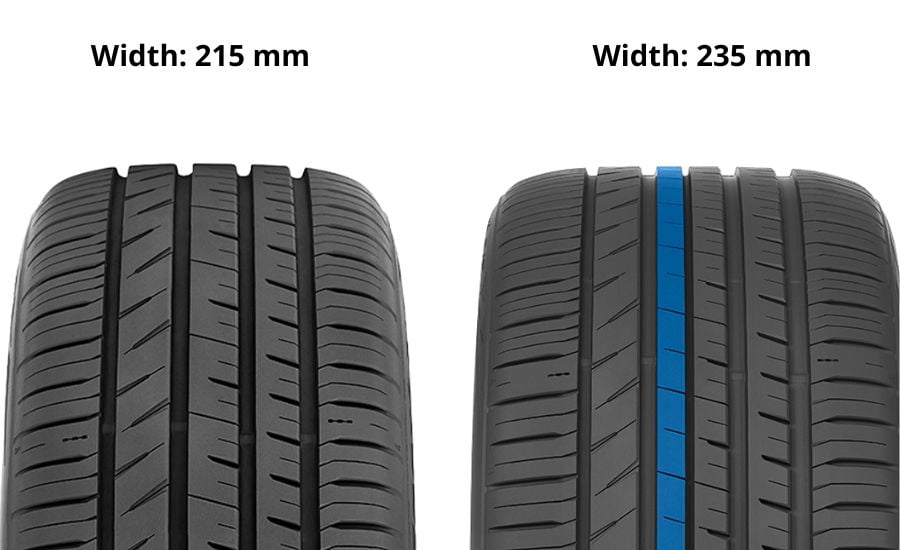
235 vs 215: do tires have the same aspect ratio?
A 215 tire’s side panel is firmer than a wider tire, which leads to a more comfortable ride, but tires with a lower aspect ratio respond better to lateral force.
Traction comparison
Car manufacturers generally prefer wider tires for their longevity. 235 tires are superior to 215 tires on dry coverings because of their larger contact area with the road. This boosts load transfer and guarantees better traction performance.
Gas mileage
The majority of automotive experts suggest maximizing gas mileage by switching to low-rolling resistance tires. It’s widely recognized that using low-rolling resistance tires boosts fuel efficiency for most transports, which ultimately gives better gas mileage.
Due to being wider, a 235 tire has a wider contact patch across all four wheels, which leads to more fuel consumption, whereas a 215 tire consumes less fuel.
If gas mileage is a concern, go with 215 tires as they offer more fuel efficiency than 235 tires.
Load-bearing ability
The side panel typically shows the load-bearing ability of a tire. Since a 235 tire has a greater load-bearing ability than a 215-width tire, 235 tires are the best choice for vehicles that require a greater load capacity.
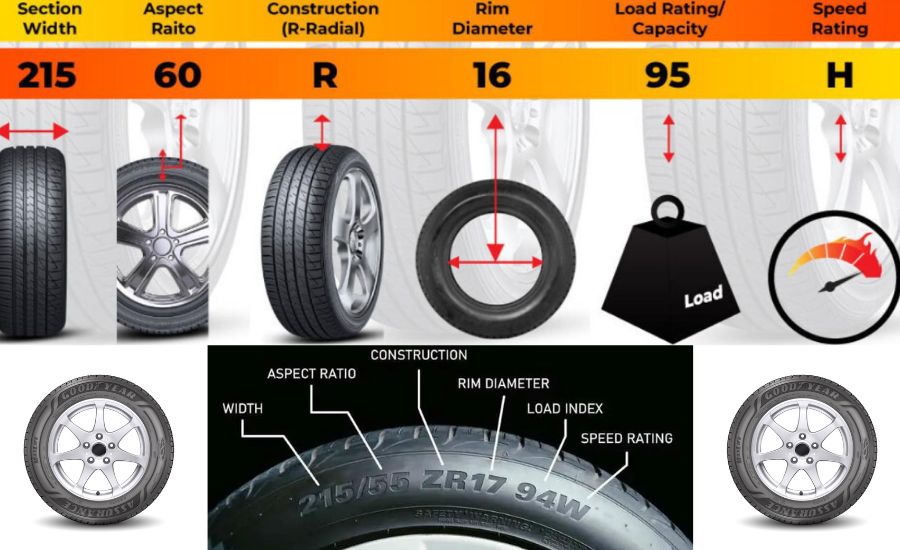
Strengths of 215 size tires
Now let’s move on to the strengths of 215 tires. The transverse width of these tires is 215 millimeters, which is narrower than that of 235 tires. This narrow profile provides increased flexibility and controllability on dry coverings.
Functions:
- transverse width 215 millimetres
- an aspect ratio not exceeding 65
- 14 to 18 inches is required for the rim diameter
- commonly applied to saloon cars and small-displacement motor cars
Operating characteristics
- excellent dry-running properties
- good grip on the wet coverings
- less prone to hydroplaning at high speeds.
Improved fuel economy
As the width of the 215 tire is smaller, this has a significant impact on minimizing rolling resistance and the energy required for the tire to propel the vehicle forward.
If fuel economy is a priority, 215 tires are found to use less petrol. In addition, there is virtually no pollution.
Reduced road noise
A 215 tire is a narrower tire and less noisy than a wider tire, particularly on highways.
This is due to their narrower width, which decreases the contact area with the road surface, reducing friction, vibration, and noise.
The 215’s optimized tread and construction also help to minimize noise levels. To diminish the amount of noise passed on to the cabin, the tread pattern is aimed to direct and dissipate sound waves.
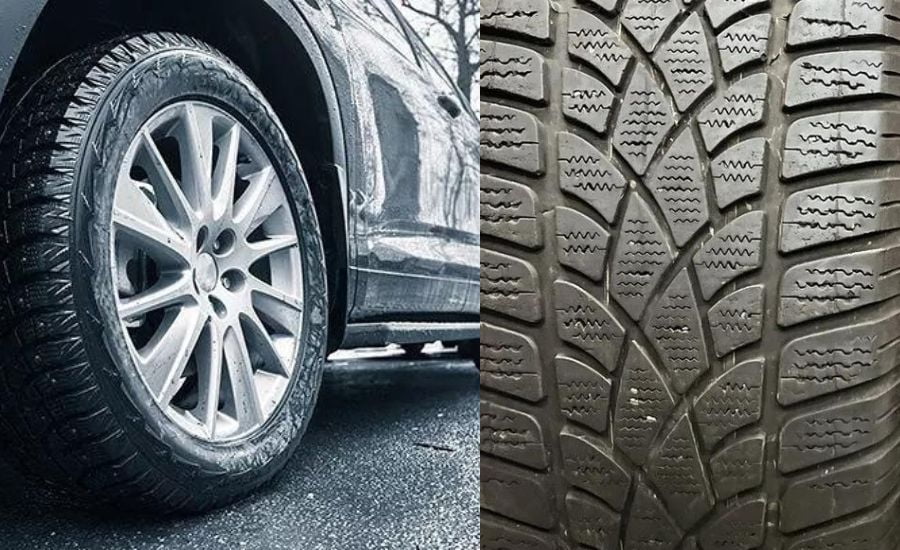
Strengths of 235-size tires
While a wide 235 tire may be more expensive than a narrow tire, it has many strengths.
Improved handling characteristics
235 tires carry more load than narrower tires because they do not pull away from the road. Consequently, the pressure is lower and the stability is higher.
As a result, the tires offer better handling and flexibility. In addition, the 235 tire design boosts steering precision and feedback, giving the driver a greater sense of connection with the road.
Improved grip on dry road surface
The contact patch size increases with the size of the tires. This means that the tire will grip the road much more easily than narrower tires. Additionally, better load transfer also contributes to better grip. This is why 235 tires are preferred for dry roads.
Increased load-bearing ability
235 tires lift and carry more load than narrower tires because they don’t pull away from the road. This provides less pressure and more controllability.
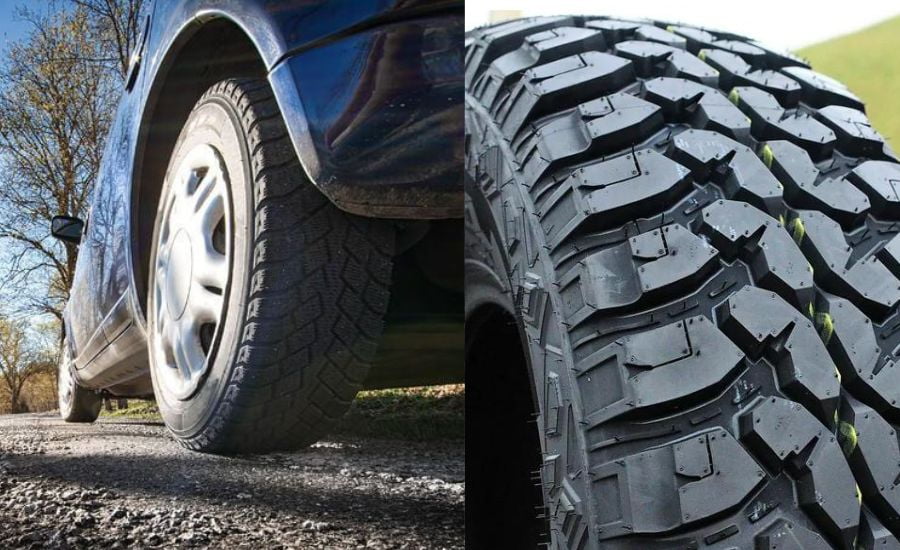
Conclusion
The choice of tire type is a subjective matter. However, I recommend taking into account the technical specifications and limitations of your vehicle.
To guarantee the maximum load and speed capacity, select tires that meet these requirements based on the load index and speed rating.
According to the manufacturer’s recommendations, you should consider tire size and type when choosing tires. The car manufacturer typically suggests a specific tire size. Make sure you choose tire sizes that match the specifications. Manufacturers often recommend certain tire sizes depending on the make and model of your vehicle.
In general, careful consideration of driver preference, weather conditions and terrain, manufacturer’s recommendations, and vehicle specifications and limitations will help you choose the right tires for your vehicle. Remember, choosing the right tires can improve safety and fuel efficiency.
If the question is to choose between 215 and 235 tires, then according to the study, I can conclude that 235 provides better load capacity, better grip on dry terrains, and the best handling.
On the other hand, 215 tire is inexpensive and economical. If you live in areas with high humidity, 215 tire is the best option. Verify all the factors and then choose the tires that better suit your requirements.
I hope this guide will help you to make the right choice. You can contact me with any questions, I am glad to answer everyone!
Topics & Questions
Below is a list of the topics and questions from my clients and most frequently discussed among driving enthusiasts.
What’s the difference between a 215 and a 235 tire?
Even comparing 215 vs 235 tires, choosing between the two can be a difficult decision for many. Their width is what separates them, with the 215 being 20 millimeters narrower than the 235. But as always, the choice depends not only on size but also on driver preference, vehicle comparability, and weather conditions.
Are 215 tires wider than 225?
A tire with a size 225 is 225 millimetres wide and a tire with a size 215 is 215 millimetres wide. This means a 225 tire is 10 millimeters wider than a 215 tire.
Which tire is bigger 215 or 245?
These tires are interchangeable, both tires have the same aspect ratio (0.45) and rim diameter. But the 215 tire is 30 mm or about 1.2 inches narrower than the 245 tire.
How much taller is a 235 tire than a 225?
The 225 tires are 22.5 cm wider and the rim size ranges from 7 to 8.86 inches. On the other hand, the 235 tire has a rim size ranging from 7.5 to 9.25 inches. In addition, the side panels of the 235 are taller, with a height of 177 mm, while the 225 tires have a height of approximately 157 mm.

